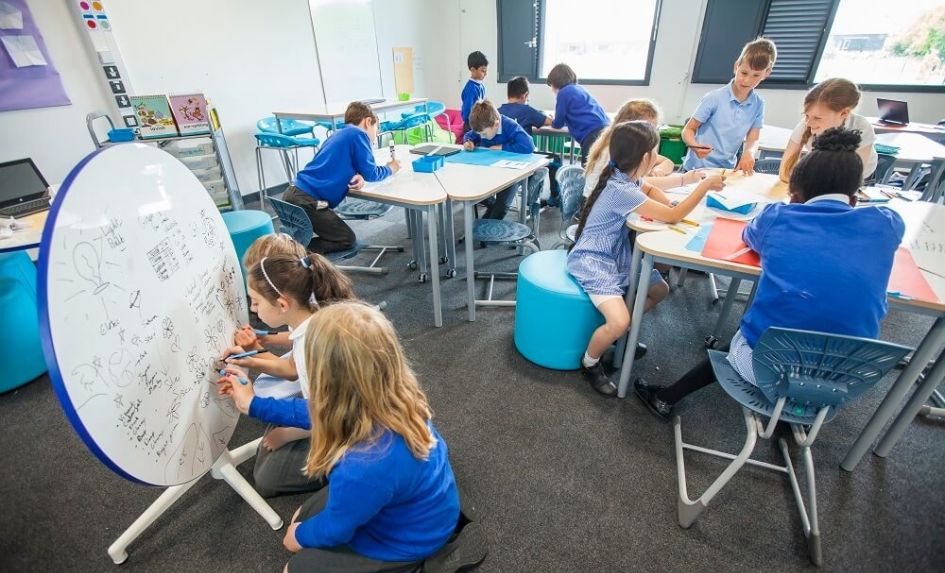At Trumpington Park Primary School, part of Cambridge Primary Education Trust, we have signed up to an international project that could fundamentally rethink space utilisation in the classroom and bring significant learnings for the sector.
Planning Learning Spaces was published in October 2019 as a guide for anyone involved in the planning and design of learning environments.
The book brought together educationalists and innovative school architects from all over the world to pool their collective expertise and inspire the design of more intelligent learning spaces.
To support this, Planning Learning Spaces in Practice was launched to help schools translate their educational vision into learning space design principles, enabling them to create new, or refurbish existing, spaces that actively support their learning goals.
Schools are guided through a reflective process, building the link between curriculum and design via a structured framework. Focusing on the school’s vision, values and ethos, the process helps translate learning behaviours and activities into design principles.
Effective learning spaces for student success
Our school was invited to participate in the global pilot of this project.
One advantage to a new school like Trumpington Park Primary, which opened in September 2017, is that not all classrooms are in use for the first few years, so by joining the Planning Learning Spaces in Practice pilot project we have the opportunity to develop our learning spaces in alignment with its educational vision.
A series of meetings and workshops were held with the Planning Learning Spaces team to define our ambition.
We started from the heart of our ethos and our values, and looked at those in terms of what we wanted to achieve in our teaching and learning, but then assessed the constraints of the current classrooms we have in being able to get that vision to work.
While we want to emphasise collaboration and ownership of learning, this can sometimes feel restricted by the furniture and fixed features of a space and make it harder for children to be able to do some of the things we feel are fundamental in their learning.
Ultimately we were still presented with the inevitable standardised classrooms (measuring approximately 55m2 for up to 30 children) in which to work so we wanted innovative and cost-effective ways to transform these spaces into inspirational learning environments.
From there, we looked at different models to enable children to be able to work in different ways in that space to support their personalised learning.
We have used the Planning Learning Spaces Design Framework to develop what we want to do next, looking at every aspect of school life, and how this relates to the design of learning spaces.
Physical spaces and an active learning experience
In the short-term, with social distancing in place, children have been more separated than we would want; bearing in mind that one of our key values is collaboration and one of the key drivers of the space.
However, I am absolutely focusing on the expected longer-term impact. What we anticipate, and what we have seen from small groups of children using the space at this time, is being able to have a high level of flexibility around the organisation of a space will have a huge impact on the way in which teaching and learning happens there.
Now we are looking at all the different learning that can happen in that space in very different ways, and teaching children how they can have an impact on their independence and ownership within that space.
Having the children as a very central part of the classroom environment will, I believe, make a significant difference to their overall development.
Student engagement in learning activities
You look at a classroom and you take it as it is, particularly in a new build. This project has really forced our hand to look at that space in a very different way, go in with a different pair of glasses, and this has been refreshing.
The whole process is suitable for schools looking to repurpose old spaces, or for those designing new buildings, and helps to ensure a successful transition into these purpose-designed learning spaces.
Professor Peter Barrett, author of The Clever Classrooms report, is monitoring the Planning Learning Spaces project to see how the learning outcomes of pupils are affected by this ‘hands on’ approach to creating their own learning environments.
The rigorous assessment of outputs from this project will be available in the autumn term.
Mel Shute is Headteacher at Trumpington Park Primary School, part of Cambridge Primary Education Trust.









